#if you eat pork; i like to wrap the tofu in thin slices of hot pot pork before pan frying it
Explore tagged Tumblr posts
Text
Korean Food in Abu Dhabi
It's nearly impossible to not fall in love with Korean food, which features meat that is grilled right on the table in front of you, steaming hot stews, chilies, and pickles.
I'm going to share 10 of the best-tasting dishes from Korean cuisine with you in this food guide.
Now is the time to eat delicious Korean food in Abu Dhabi.
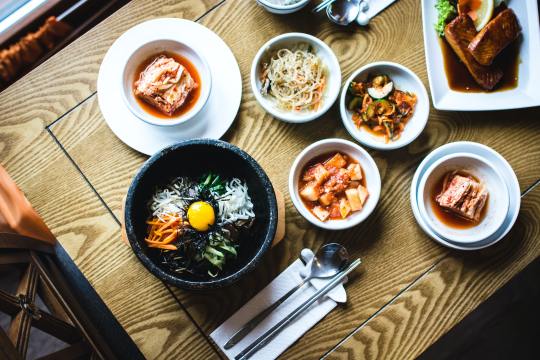
1. Kimchi I'm going to start this South Korean food list with something that isn't really a dish at all, but is crucial to any Korean meal: KIMCHI. While there are numerous varieties of kimchi, the most common is made from napa cabbage that has been preserved and lightly fermented in bright red chili flakes. You're on your way to becoming a Korean food connoisseur if you enjoy kimchi!
2. Samgyeopsal A South Korean foodie favorite is fatty slices of pork belly grilled right in front of your nose. With a few slabs of this incredibly tasty pork and garnishes of lettuce leaves, garlic, and chili paste, you've got a flavor to remember.
3. Bulgogi Pork Bulgogi is another well-known Korean barbecued meat specialty. While bulgogi is traditionally made with beef, it can also be made with thin strips of pork or chicken. Before grilling, the meat is marinated in sweet soy sauce, garlic, and sesame oil. The version I ate above came from Dwaeji Bulgogi, a New Valley restaurant in Seoul that specializes in pork bulgogi.
4. Stew for a Hangover When I first arrived in South Korea, I was eager to try the famous Korean hangover stew. It arrived in a steaming earthenware dish. Haejangguk comes in a variety of flavors, but the one I had was made with pork spine bones. The broth was rich and spicy, with tender chunks of fatty pork and Korean chili paste as flavors.
5. Stew with Soft Tofu Sundubu Jjigae is a flavorful Korean dish served in a flaming hot pot. There isn't much more comforting on a cold rainy day than this dish, which is made with super soft tofu, a few bits of seafood, addictive kimchi soup, and an egg thrown on top.
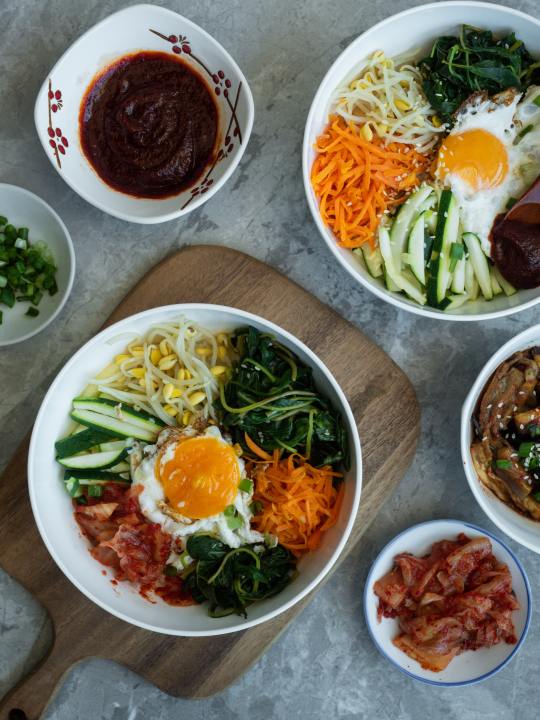
6.Soup with Korean Ox Bones The highlight of Korean seolleongtang is ox bones simmered on low heat for hours and hours. The dish is served with a few light noodles, beef slices, and green onions. The broth is delivered unsalted and unseasoned, so season with salt, pepper, chili paste, and extra green onions to taste.
7.Korean Mixed Rice The cold version, like the Dolsot Bibimbap mentioned above, is served in a metal pot. Bibimbap is a fantastic lunchtime delight when all of the ingredients are combined. I liked both the cold and hot versions, but if I had to choose, I'd go with the scorching hot dolsot bibimbap.
8.Japchae I've always loved stir-fried translucent noodles. The Korean version is delicious, with chewy stir-fried sweet potato noodles mixed with slivers of carrots, cucumber, onions, mushrooms, and occasionally meat pieces. Japchae has a mouthwatering fragrance and a flavor you'll love. It's fried in sesame oil and garnished with toasted sesame seeds.
9.Tteokbokki If you're looking for Korean street food, tteokbokki is probably the first thing you'll come across - it's all over Seoul! It's the poke bowl of Seoul, a popular, easy-to-eat, and delicious dish.
10.Gimbap The SPAM musubi was created in Hawaii using original Japanese ideas, and the gimbap was created by Koreans. Gimbap is one of South Korea's most popular foods, whether eaten as a meal or as an on-the-go snack. Gimbap is an assemblage of sushi rice, a few Korean pickled vegetables, spinach, and ham wrapped in sheets of toasted seaweed, similar to a Japanese style hand roll.
1 note
·
View note
Text
vacuum storage box marvelous dried eggs
Because the appearance of dried egg is similar to dried bean curd, many people easily confuse dried egg with dried bean curd. But when you eat it in your mouth, you can taste the obvious difference: it is smoother than dried tofu, and even has a Q-bounce taste, without any eggy smell, and the aftertaste has a faint aroma of soy sauce. The prepared dried egg can be cold-boiled or hot-fried. It can be eaten in a variety of ways, and it is no less than dried tofu. Because it is rich in high-quality protein, low-fat and healthy, dried eggs have been transformed in the past two years and have become a popular snack on a certain treasure. Braised eggs can be stored in a vacuum glass container for 3-5 days without any problems.
Dried eggs: 12 egg whites, 4 tablespoons light soy sauce, 2 tablespoons dark soy sauce, 1 teaspoon salt, 20g rock sugar, 2 star anises, 2 fragrant leaves, 1 small piece of cinnamon, 1/4 teaspoon pepper, 3 slices ginger, 20g white onion
Green peppers, shredded pork, dried eggs: 1 green pepper, 1 red pepper, 1 dried egg, 150g of meat, 3 slices of ginger, 5 slices of garlic, 1 teaspoon of soy sauce, 1 tablespoon of balsamic vinegar, 1 teaspoon of salt, 1/4 teaspoon of sugar, 1/ 4 teaspoons water starch 1 tablespoon
dried eggs
1. Wrap the bottom of the mousse mold with high temperature-resistant plastic wrap, apply oil on all sides, pour the egg white into the mold, and break the small air bubbles
The egg white does not need to be beaten, and the movement should be as light as possible to avoid excessive foaming.
The Auto-Vacuum Glass Container supplier reminds you that you can use a crisper box without a mousse mold. Line the bottom of the crisper with oiled paper, and then pour the egg whites.
2. Cover with plastic wrap, put it in the pot and steam for 15-20 minutes on medium-low heat, until the egg white solidifies
3. After the egg white is steamed, use a knife to cut the edge, demould for later use
4. Put an appropriate amount of water in a pot, add ginger, scallion white, cinnamon, bay leaves, star anise, peppercorns, light soy sauce, dark soy sauce, rock sugar, salt, bring to a boil, and simmer for 20 minutes on medium heat. The amount of water should not cover the dried eggs. Turn down the heat, remove the spices, put the dried eggs into the pot and cook for 5 minutes
5. Put the dried eggs into the fresh-keeping box, pour in the marinade until the dried eggs are covered, and refrigerate overnight
Green pepper meat slices with dried eggs
1. Green and red peppers are cut into hob blocks, and two pieces of meat and eggs are dried and cut into thin slices
2. Add 1/4 teaspoon salt, 1/4 teaspoon sugar, and 1 teaspoon cooking wine to the cut two-knife meat to taste, add 1 tablespoon cooking oil, stir well, and marinate for 5 minutes
3. Heat the oil in a pan, add the meat slices to disperse, sauté the oil, then add ginger and garlic slices and sauté until fragrant, green and red peppers and dried eggs are put into the pot, fry on high heat until they are broken, add 1 tablespoon of water starch, 1 large Spoon of light soy sauce, 1 teaspoon of balsamic vinegar, and an appropriate amount of salt to taste, and it can be put out of the pot and placed on a plate. Under the action of heat, after absorbing the sweetness and spiciness of green and red peppers and the freshness of meat slices, the taste of dried eggs becomes more complex. more charming.
This sudden long holiday broke many people's original plans and lives, but it also made us understand that those ordinary lives that you and I used to take for granted are the moments we need to cherish. Just like today's dried green pepper and eggs, a very simple home-cooked dish, but there is a magic that makes people unable to resist adding more rice!
Bestfull's product categories include Lunch Box container, mini food container, round boxes and other vacuum preservation boxes of various shapes. The materials of the products are divided into plastic and glass. Whether you prefer lightweight plastic material or glass material with better sealing effect, we are professional manufacturers. In this field, we are at the world's leading level, so that you can use and eat with peace of mind.
0 notes
Text
What’s the most iconic food around the world? Let’s find out!
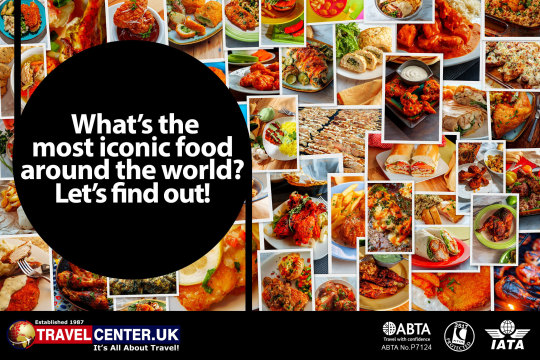
“Cooking is all about people. Food is maybe the only universal thing that really has the power to bring everyone together. No matter what culture, everywhere around the world, people eat together.”
– GUY FIERI –
What is the most iconic food around the world? The world is a gastronomic paradise; it harbours diverse culinary uniqueness in each corner. How many cuisines contribute to describing a particular destination and what would a local suggest to taste or where to find it?
If you look a little closer, you’ll soon learn that the best dishes in the world can be an up-close lens on the destination’s history and culture. Despite their ancient origins, the dishes have been modernised for the palates of today’s world.
Different food from around the world
Every foodie enjoys tasting their way around the world by indulging in traditional cuisines, by trying a new flavour for the first time or getting to enjoy an iconic dish they’ve heard about. We learn about different cuisines by tasting the most popular signature dishes and staple ingredients of each country.
A culinary journey across the globe is the best way to discover its culture and cuisine. This makes it the pure delight of culinary travel.
What’s even better than eating the best food in the world? You get to have a new food experience and enjoy another new dish. So, let’s take a look at the most iconic food from around the world. These are 10 different nations with their famous and traditional dishes, starting in the UK!
Warning: This list of food from around the world will make you hungry!
British Cuisine
Yes, one can’t really talk about Britain without mentioning one of the most well-known and distinct cultures on Earth: the British culture. With its own dialects, customs, art, literature and history; it is easy to see why many consider it to be one of the richest cultures in existence.
Britain has a wide variety of cuisine and holds an excellent culinary reputation. In fact, these dishes are some of the best food from around the world. However, culinary expertise in the UK is not new. Moreover, Influenced by the Romans, Anglo-Saxons, French and even other parts of Europe: In essence, a hodgepodge of diverse styles and traditions.
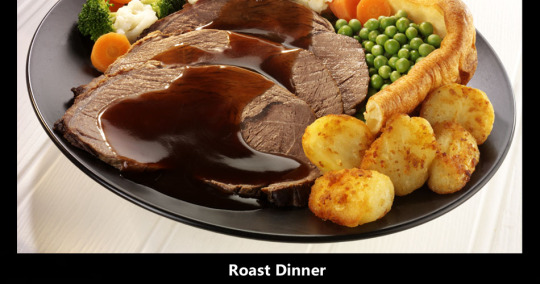
Fish and Chips – Fish and Chips are presumably the most popular British food known across the globe.
English Breakfast – English breakfast is served with bacon, sausages, egg, baked beans, black pudding, fried toast, hash browns, mushrooms, and egg. Best enjoyed with a cuppa or fruit juice.
Roast Dinner – A traditional roast dinner consists of different roasted meats like chicken breast, turkey, pork, and beef. This is accompanied by seasonal vegetables, roasts, potatoes, and gravy.
Bangers and Mash – A famous British pub food. A dish comprising sausages, mash potatoes, and onion gravy.
Trifle – A strawberry flavoured classic British dessert made up of layers of cake rolls, custard, jelly, cream, and fruit toppings.
Italian Cuisine
My personal favourite, Italian cuisine, is one of the oldest, most beloved cuisines and considered some of the best food from around the world. With extraordinary diversity of flavours, richness and depth, offering something for everyone’s taste buds.
Italian food varies from region to region and associates with various kinds of pasta and pizza. In reality, Italian food is ever-changing, from endless combinations and new adaptations. What makes Italian food one of the best food from around the world is not just its flavours but also its diversity and also an Italian meal can be expected to be structured as follows: Antipasto (appetiser), primo (rice or pasta), second (meat), and dolce (dessert).
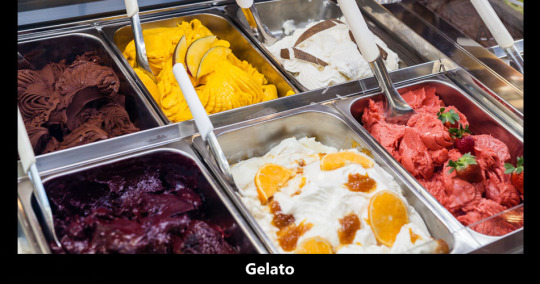
Pizza – Pizza is a flat dough topped with tomato sauce, mozzarella, and basil. (More toppings are added to create different variants of pizza)
Risotto – An Italian version of creamy rice cooked in vegetable or meat stock, cheese and wine after frying it in sautéed onions.
Lasagna – Lasagna is traditional Italian comfort food made in pasta sheets, meat, sauce, and cheese.
Ossobuco alla Milanese – Ossobuco is slow-cooked veal in white wine, meat broth, and vegetables seasoned with lemon zest, garlic, and parsley.
Gelato – Gelato is a rich variant of ice cream in terms of density, texture and is more intense in flavour.
French Cuisine
Like Italian food, French cuisine was also one of the world’s first cuisines and has taken its flavours around the globe. Admittedly, French cuisine is an art, so rich in regional variations. The French take great pride in their traditions of cooking. The modern way of cooking takes a lot from roots in France, and for decades, French food has been an elegant cuisine. This ranges from sylvan, robust, and healthy to the finest meals. A typical French meal would consist of bread, cheese, and wine.
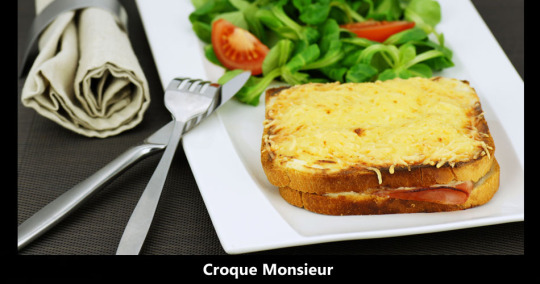
Boeuf Bourguignon – Boeuf Bourguignon, a classic French beef stew made with red wine, pearl onions, mushrooms and bacon.
Croque Monsieur – A sandwich is taken to the next level! Grilled ham and velvety béchamel cheese sauce sandwich.
Croissants – Croissants are crescent-shaped buttery, flaky pastries perfectly crisp on the outside, tender and moist on the inside.
Coq Au Vin – A version of red wine chicken stew, cooked on a low heat to perfection.
Cherry Clafoutis – A popular cherry dessert in France! Juicy, sweet cherries wrapped in a rich batter and baked into a mixture of a cake and custard.
Chinese Cuisine
Some of the best food in the world, Chinese cuisine has taken over many parts of the world by storm! I mean, I’m sure you’ve had a Chinese take-away meal at least once in your life. This particular cuisine classifies its regional diversity into different styles: Cantonese, Szechuan, Hunan, Zhejiang, Shandong, Anhui, and Fujian. Each food tradition is formed by the regions’ history, climate, geography, and lifestyle.
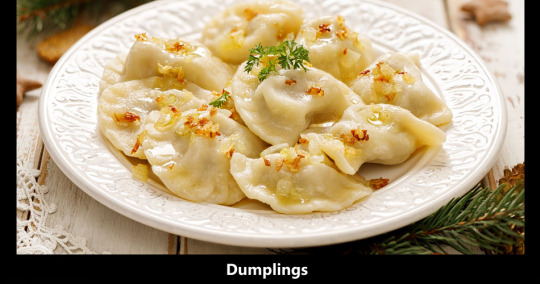
Sichuan Pork – Sichuan Pork is spicy poached slices of pork coated with egg-white and starch to preserve its freshness and tenderness.
Dumplings – Dumplings comprise a filling of minced meat and chopped vegetables wrapped in a thin dough skin.
Peking Roasted Duck – Peking duck is a duck roast savoured for its thin and crispy skin, a world-famous dish from Beijing.
Chow Mein – Chow mein is a stir-fried noodles dish consists of meat (chicken, beef, shrimp, or pork), onions, and celery.
Kung Pao Chicken – Kung Pao Chicken is a famous Sichuan-style dish made with diced chicken, dried chilli, and fried peanuts.
American Cuisine
The best way to explain American cuisine is that it is a blend of different cuisines. In other words, it is a mongrel, where different ethnic groups contributed to the nation’s food traditions. American cuisine has drastically changed over the years, as have American lifestyles. Some of these dishes were contributed by Native Americans, Colonial Americans, and Modern Americans. These were adapted, changed, and invented, becoming all-American dishes. Similarly, many dishes are regionalised, such as soul food in the south, Tex-Mex cooking in Texas, etc.
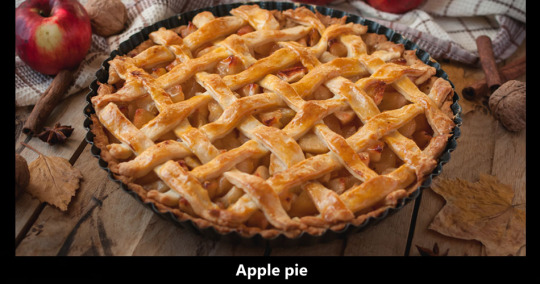
Hot dogs – There is no need for a special introduction for the “All-American” hotdog, a hotdog (sausage) wedged between a bun.
Philly cheesesteak – A Philly cheesesteak is a sandwich made by grilling chopped beef, onions, and cheese then laid into a long Amoroso bun.
Grits – Grits is a creamy porridge-like dish made with whole dried white corn kernels that can go plain, savoury, or sweet.
Mexican flat enchiladas – Mexican or Tex-Mex style enchiladas smothered in red chilli sauce or green topped with an optional fried egg.
Apple pie – Apple pie is a sweet dish that features a sweet apple filling and a flaky butter crust with a shimmering lattice pie crust.
Indian Cuisine
It’s hard to put Indian cuisine in a nutshell because of the country’s regional diversity and vast history. The early Indian cuisine relied heavily on a class system which dictated what people were able to eat. However, in more recent times, the cuisine has been a combination of traditional dishes and many international influences. The most common misinterpretation about Indian food is that many of us think it’s all curries. But in reality, it isn’t. An essential factor of Indian cuisine is that the blends of spices are designed to bring out the ultimate flavour.
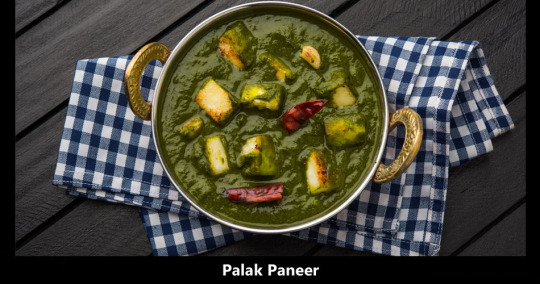
Murgh Makhani (Butter Chicken) – Murgh Makhani is by far one of the deliciously best dishes in the world. This hot dish made with chicken tastes great with flatbreads.
Rogan Josh (Red Lamb) – A delectable spicy dish, Rogan Josh, is a red lamb stew prepared with a long list of spices, red chillies, and coconut cream.
Palak Paneer (Spinach and Cottage Cheese) – A popular Indian dish Palak paneer, a mildly flavoured dish made with spinach and cottage cheese with Indian spices.
Naan (Indian Flatbread) – Naan, a flatbread traditionally cooked in a tandoor oven, goes with anything, including curries and stews.
Gulab Jamun – An Indian sweet delight, a festive favourite made with milk solids, fried until golden and doused in saffron induced sugar syrup.
Japanese Cuisine
Food in Japan is plausibly one of the unique cuisines. The reason being that many ingredients used in their cooking can very rarely be found in other cuisines. It’s not all about sushi and tofu. The art of Japanese cuisine is prepared meticulously based on the proper seasoning and fresh ingredients.
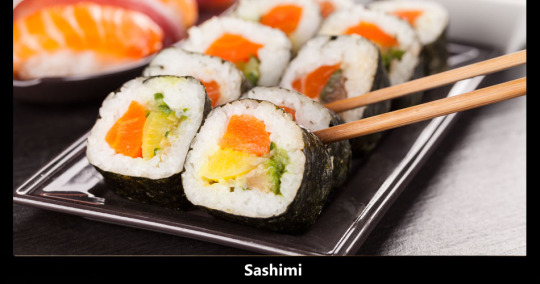
Sushi – Sushi is some of the best food from around the world. This traditional Japanese dish consists of vinegar-flavoured rice rolls served with vegetables and raw seafood.
Sashimi – Sashimi is similar to sushi, but raw fish is sliced into small bite-sized pieces without the rice.
Tempura – Tempura is a dish prepared with seafood, meat, and vegetables covered in flour and egg batter then deep-fried in oil.
Soba and Udon – Soba or buckwheat noodles and Udon or wheat noodles are made by immersing the noodles into broth enjoyed hot or cold.
Wagashi – Wagashi are traditional Japanese sweets made using mochi rice cakes, Anko paste, agar, chestnuts, and sugar.
Lebanese Cuisine
Cuisine in Lebanon food includes many fresh ingredients like vegetables, fruits, seafood, and little animal protein. These ingredients are meticulously prepared in a fusion of Mediterranean and Arabic influences. The most significant feature of this fantastic food is the mezze, a selection of salads, vegetable dips, pickles, and Arabic bread. In recent years, people have come to celebrate the extraordinary flavours of Lebanese food.
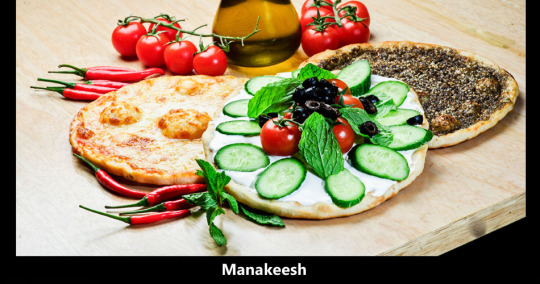
Baba Ghanoush – Baba Ghanoush is a hummus-like dip made from eggplant served with pita bread and drizzled with olive oil.
Manakeesh – The Lebanese version of pizza, Manakeesh, is made with meat, cheese, zaatar. Manakeesh is served with tomatoes, cucumbers, fresh mint leaves, and olives.
Falafel – Falafel is made from deep-fried crushed chickpeas, served in a pita pocket with vegetables and tahini sauce.
Fattoush – Fattoush is a traditional Lebanese salad.
Baklava – Baklava is a golden flakey pastry made of filo dough, honey, and assorted nuts.
South African Cuisine
South African cuisine is extensive, culturally diverse, nourishing, and hearty, very much like the locals. Traditional South African cuisine is downright authentic, with influences induced by each culture. With the freshest ingredients from farm to table, the food here is amazingly delectable, making it one of the best foods from around the world!
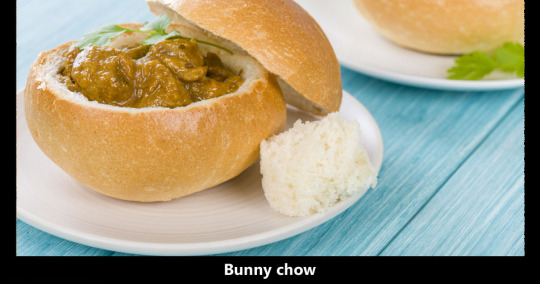
Chakalaka – Chakalaka is a spicy vegetarian dish of tomato, beans, peppers, onions, and curry. This can be enjoyed with anything — rice, meat, bread, or other veggies.
Bunny chow – Bunny chow is a world-renowned dish made up of a hollowed-out loaf of bread filled with a chicken, pork curry, or a lentil and bean combo.
Bobotie – Bobotie, made up of minced meat, is cooked in curry, herbs & spices, and dried fruit, topped with a milky-eggy custard, and baked until golden brown.
Potjiekos – A dish of potjiekos features meat, potatoes, biltong, and vegetables slowed cooked over an outdoor fire.
Malva Pudding – Malva Pudding is a sweet, spongy cake made with apricot jam and a cream sauce poured on top.
Caribbean Cuisine
Food from the Caribbean is a delicious mix of French cuisine, African cooking, and local foods! Caribbean food is delightfully spicy, warming, and eloquent. Food staples include peppers, sweet potato, coconut, plantain, mutton, tropical fruits, and leafy green vegetables, all prepared into a heady concoction.
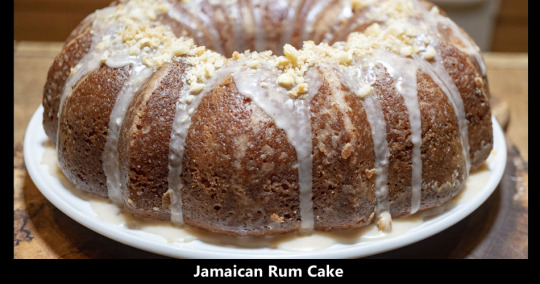
Jerk chicken – Chicken marinated with hot Jerk spice and served with rice and peas. Jerk chicken is one of the most traditional food in Jamaica.
Ackee and saltfish – Ackee and saltfish, Jamaica’s national dish, is prepared with ackee fruit and salted codfish, suitable for mealtime.
Macaroni pie – Macaroni pie is comfort food in the Caribbean; a cheesy baked pasta dish is delicious with stewed or barbecued chicken.
Lambi – Lambi’s main ingredient is Conch. The dish is prepared with a combination of Conch, curry powder, coriander, thyme, and marinating with other spices.
Jamaican Rum Cake – A Bundt cake with a moist and tender crumb smothered in sweet butter and rum syrup.
Oh boy! That’s a long list of the best food from around the world! So, if you would like to go on a culinary adventure and taste your way around the globe, give Travel Center UK a call or drop us a line, and we’ll be glad to assist you in planning your next trip.
Read More:- What’s the most iconic food around the world? Let’s find out!
This Article, Information & Images Source (copyright):- Travel Center UK Blog
#Travel#Travel Blog#Travel Blogger#Travel Vibes#Holiday Makers#Foodies#Food Blogger#Food Articles#Travel Center UK
0 notes
Link
Mapo tofu.

Hey everyone, it is Louise, welcome to my recipe page. Today, we're going to make a distinctive dish, mapo tofu. It is one of my favorites. This time, I'm gonna make it a little bit unique. This will be really delicious.
Mapo tofu is one of the most favored of recent trending meals in the world. It's easy, it is quick, it tastes delicious. It is enjoyed by millions every day. They're fine and they look wonderful. Mapo tofu is something that I've loved my entire life.
To get started with this recipe, we have to prepare a few components. You can have mapo tofu using 25 ingredients and 8 steps. Here is how you can achieve that.
The ingredients needed to make Mapo tofu:
{Get of For the mince meat seasoning:.
{Make ready 1/2 teaspoon of white pepper.
{Get 1/2 teaspoon of fine salt.
{Prepare 1 of cap of Shaoshing Rice Wine.
{Get of Thickening mapo tofu sauce:.
{Make ready 1 teaspoon of corn starch.
{Get 1-2 tablespoon of water (to create a liquid paste).
{Take of Making the mapo tofu:.
{Get 1 tablespoon of cooking oil (or any cooking oil of preference).
{Take 1-2 teaspoons of Sichuan peppercorns (add more or less depending on spice level preference).
{Take 2 teaspoons of ginger, finely minced or grated.
{Get 2 of spring onions, finely sliced (stalk part for cooking, green part for garnish).
{Take 500 g of mince pork (or any other mince meat depending on preference).
{Take 2 of medium garlic cloves, finely minced or grated.
{Get 500-600 g of medium firm tofu or silken tofu, drained and cut into 3/4 inch cubes (add more or less depending on preference).
{Prepare 1/3 cup of frozen peas (add more or less depending on preference), soaked in warm water.
{Prepare of For the mapo tofu sauce:.
{Get 2 tablespoons of La/spicy Doubanjiang (chilli broad bean paste).
{Prepare 1 tablespoons of Non-spicy Doubanjiang (broad bean paste).
{Get 1-2 tablespoon of crushed Yellow bean sauce (add more or less depending on preference).
{Make ready 1-2 tablespoons of spicy chilli sauce (or spicy crushed garlic sauce if not using fresh garlic).
{Get 1-2 teaspoons of white pepper.
{Take 1-2 cups of hot water (from kettle).
{Prepare of Garnish:.
{Make ready of Spring onions, finely sliced.
Steps to make Mapo tofu:
In a bowl transfer the mince meat and season with white pepper, salt and Shaoshing rice wine. Set aside..
Finely chop the garlic, ginger and spring onions and set aside. In a wok on medium heat, heat up the oil, add the Sichuan peppercorns and cook until fragment. Then add the ginger and the chopped stalks of the spring onions and stir occasionally to prevent burning. Cook for 1-2 minutes..
Add the mince meat and break it into small grains (to avoid getting clumps) using a wooden spatula. When the meat is almost cooked add the garlic and stir occasionally to avoid the garlic getting burnt..
When the meat is cooked add both types of doubanjiang stirring to distribute the paste evenly, then add the rest of the sauces. Let it cook for a few minutes so the meat can soak in the flavours of the sauces. Then add the hot water (pre boiled kettle water) and let it simmer. Reduce heat to low for 5 - 7 minutes and cover with lid. Taste the sauce and amend if needed (add more spicy chilli sauce for hotter, white pepper or non spicy doubangjiang etc)..
Gently place the cubed tofu into the mixture. Tip: gently stir and mix the tofu in to avoid it loosing its shape and breaking apart. Let it cook for 1 minute. Lastly, add the peas and gently stir and incorporate into the mixture..
In a small bowl add the cornstarch and water. Stir well until the mixture has dissolved into a liquid paste..
Now add cornstarch mixture to wok. Stir everything gently, place a lid on the wok. Leave to simmer and turn the heat to very low heat for 5 - 10 minutes until the sauce thickens. Tip: if the mixture is still thin add a little more cornstarch liquid to make the sauce thicker..
Once the sauce is to desired thickness, to finish off garnish the mapo tofu with the finely sliced green part of the spring onions. Then transfer into a large serving bowl. Eat and and serve immediately while hot. Eat it with a bowl of rice and some side dishes like steamed or panfried vegetables..
So that is going to wrap it up for this exceptional food mapo tofu recipe. Thank you very much for reading. I am sure that you can make this at home. There's gonna be interesting food at home recipes coming up. Don't forget to save this page in your browser, and share it to your loved ones, colleague and friends. Thank you for reading. Go on get cooking!
0 notes
Text
Malaysian Food and Top Ten Must Eats

Eating is a favourite pastime in Malaysia. I don't know if it was a Malaysian who coined the term 'live to eat', but other than visiting the mall, Malaysians eat, eat and eat. In fact, we eat at anytime of the day. Or night. Or even midnight. Yes, there are plenty of 24 hours restaurants called 'mamaks' that cater to our midnight hunger pangs. In fact, the stereotype of a Malaysian is that he eats not just during breakfast, lunch and dinner, but in between as well! This used to be such a problem in civil service that the government had to eliminate brunch time in order to increase productivity!
In fact, in Malaysia, very often people do not say, "How are you?". Instead, they say, "Sudah makan?", which means, "Have you eaten?"
It's not surprising that Malaysia is truly a paradise for food lovers. Being a multi cultural and multi racial society, not only do we have the best food from each culture, cultural integration produces even more types of foods.
Let me introduce to you the cuisines of the three main races in Malaysia- Malay, Chinese and Indian. If you have tried Chinese or Indian food before and think you've tasted it all, think again. Malaysian Chinese and Indian food have adapted to the local palate and have evolved into cuisines of their own. And like other cuisines, there are many regional variations, but here I will give you a general overview.
Malay
Cooking Style
Let's begin with Malay food. Malay cuisine uses many types of fresh aromatic herbs and roots such as lemongrass, ginger, garlic, shallots and chillies. Many of these herbs and roots are native to this region. Spices are also important and they are called 'rempah'. Another important ingredient is coconut milk, which is added to make a dish creamy and rich. There is also a key ingredient called 'belacan', which is a fermented paste made from tiny baby shrimps mixed with salt and chillies.
Typical Meal
You can find Malay food everywhere in Malaysia. A typical meal that you might order is a rice dish with dried anchovies, cucumber, peanuts and a hard boiled egg, together with the meat of your choice, called 'nasi lemak'. The rice is cooked in coconut milk. You might even order plain rice and usually accompanied by three side dishes of your choice, such as chicken, mutton, or beef and a variety of vegetables- all cooked in Malay style. Accompanying your dish, you could have beef soup which is called 'sup lembu'; or mutton soup which is called 'sup kambing' - two very popular Malay soups. To wash it down, you may order a refreshing cordial drink called 'air sirap'; or a cordial drink with condensed milk called 'ais bandung'.
Other Delicacies
Other Malay delicacies include fish mousse, grilled slowly over a fire, called 'otak-otak' and a noodle dish garnished with cucumber, onion, and lettuce served in savoury fish soup called 'laksa'. There are many regional variations of 'laksa', so try one in every state. There is also a Malay salad, which is called 'ulam'; consisting of a combination of fresh aromatic herbs; mint, basil, lemongrass, kaffir lime leaves, turmeric leaves, and raw vegetables like bean sprouts, long green beans, shallots, and cucumber. Instead of Thousand Island dressing, the topping is a combination of salted fish, dried prawns, fish crackers, fried grated coconut, and other savory garnishes.
If you're in Kelantan, which is the north-eastern state of the Peninsula, try this regional dish that serves blue rice with a variety of side dishes, It's called Nasi Kerabu. The blue colour is a result of the cooking process, where certain types of herbs are thrown into the water during the cooking of the rice
Dessert
For dessert, try a bread-like puff with sugar, corn, and coarsely chopped nuts in the middle called 'apam balik'.
Chinese
Cooking Style
Next, we move onto Chinese food. Chinese food is typically considered milder in spiciness, but Chinese cuisine in Malaysia has taken a spicier touch. Chinese cuisine is varied, but in Malaysia the style is generally the Cantonese style of cooking. A common way of cooking is stir fry. Cantonese cuisine balances the yin and the yang, of food, a difficult concept to describe. You may hear people refer to it as the cooling or "heaty" effects of food. For example vegetables, some fruits and soup are considered cooling and meat is considered heaty rice vs roti nutrition facts.
Typical Meal
A typical Chinese meal can be found easily in many restaurants and hawker stalls in Malaysia. You can also go to a 'kopitiam', which is a traditional Chinese cafe. You might order 'economy rice', which has rice and a variety of side dishes. A common practice is to choose three side dishes- one meat, one vegetable and the last, a dish like tofu or egg. You might also order a noodle dish. There are many styles of cooking noodles such as Cantonese or Hokkien style. You can try the fried noodle with eggs, cockles and bean sprouts called 'char kuey tiao', or Chinese noodles with dumplings and roast pork called 'wan tan mee'. You could also order thick noodles fried with black sauce and pork lard called 'hokkien mee'. Chicken rice is also very popular in Malaysia. To wash it down, you could order Chinese tea, or herbal tea.
Other Delicacies
Other delicacies include Chinese spring rolls stuffed with steamed vegetables, bean sprouts, turnip and carrot, called 'popiah'. Another popular dish here is the pork rib soup called 'bak kut the'. The soup is cooked for many hours with garlic, pork ribs and a variety of herbs. Chinese dumplings are also a must-try. They are glutinous rice wrapped in a leaf along with pork, mushrooms, nuts and salted duck egg yolk. if you have heard of 'dim sum' before, you must try the Malaysian version. It is basically an assortment of bite size dishes, including seafood, meat and vegetables. Dim sum is usually eaten in the morning.
Dessert
For dessert, a well-loved Chinese dessert is curdled soy bean milk topped with syrup called 'tao foo fah'.
Indian
Cooking Style
Indian cooking is of course, very spicy and hot. it has also adapted to the local culture to create a new type of cuisine. Most of the Indian food in Malaysia (comes from) from Southern India, but North Indian food is also widely available. Spices are the heart and soul of Indian cooking. Spices like coriander, cumin, turmeric, fennel, cardamom, clove, cinnamon and star anise are widely used.
Typical Meal
Indian food is easily available in Malaysia. For a typical meal, you might want to have rice served on a banana leaf, accompanied by a variety of spicy hot dishes such as mutton, chicken, fish, squid and crabs. Or you might order bread, and there are many types of them. To name a few, thin rice pancakes or 'thosai', fermented rice and dhal or 'vadai', wheat bread or 'chapati', flour bread or 'roti canai'. Or you may also be interested in chicken tandoori- that's chicken slowly grilled in a clay oven.
Other Delicacies
There are 24 hour restaurants open if you're suffering from a midnight hunger pang. Affectionately called 'mamak', they have been institutionalized as a Malaysian icon. Mamaks are run usually by Indian Muslims. If Westerners hang out at bars, Malaysians hang out mamaks. Mamak food is distinct, and a popular drink here is the 'the tarik', or tea with condensed milk. Other popular food you can order in a mamak is the 'maggie goreng', which is fried Maggi instant noodle with eggs, vegetables and meat.
Dessert
For dessert, you may be interested in a sweet dish of rice noodles topped with coconut and coconut palm sugar called 'putu mayam.'
Other Cuisines
There are many other types of cuisines in Malaysia, such as Nyonya cuisine, which is the cooking of the Straits Chinese. Straits Chinese trace their ancestors to Malays and Chinese, and their cooking combines the styles of these two races. I'd recommend a chicken stew cooked with salted soy beans and coconut palm sugar called 'ayam pongteh'; and a chicken dish cooked with nuts from a type of mangrove tree found in Malaysia, which is called 'ayam buah keluak'.
The Portuguese, one of the many colonialists who set foot in Malaysia, left their mark too on local cooking. One (example) is the Devil's Curry, a dish made from vinegar, herbs and nuts and plenty of chilli- hence its name Devil's Curry.
Top Ten Must Eats
Alright. It's now time for the top ten must try foods in Malaysia. As with all cuisines, it is very difficult to compile a list of only ten, especially in Malaysia where there are definitely more than ten foods you must try!
However, if I were to compile a list, it would look like this:
Number One.Nasi lemak. This is the national dish of Malaysia. Nasi lemak literally means 'rice in cream'. There are many regional variations, but the most common ones consist of steamed rice that is cooked with coconut milk and pandan leaves, which is a kind of plant indigenous to this region. Traditionally served on banana leaf, the rice is topped with cucumber slices, dried anchovies, roasted nuts and hard-boiled egg. But the most important ingredient is the 'sambal', a kind of hot spicy sauce made from chilli, pepper and spices. In fact, how delicious a nasi lemak is really depends on how well the 'sambal' is made! Most people will eat nasi lemak accompanied by a dish like chicken, cuttle fish, cockles, beef, or beef rendang which is beef cooked in dried spices, and vegetables.
Number Two. Bak Kut Teh. The name translates into 'meat bone tea'. This Chinese dish is a soup with pork ribs, herbs and garlic cooked for many hours. Other ingredients include mushrooms, internal organs, and dried tofu. Green onions and fried shallots are sometimes added in as well. Bak Kut Teh is served with rice and 'you tiao', which are long fried pieces of dough. Chopped garlic and chilli in soy sauce served in tiny plates often accompany this dish. Chinese tea is a very important part of this dish and is drunk to balance the taste. Try Bak Kut Teh for an authentic Chinese meal.
Number Three. Laksa. Yet another favourite Malaysian dish, laksa has many different regional variations. The more common one is the asam laksa. It is a sour fish- based soup where the main ingredients are shredded fish, usually mackerel, and finely sliced vegetables including cucumbers, onions, red chillis, pineapple, lettuce, mint, and ginger buds. Thick white noodles are then added into the soup. To top it off, a thick sweet shrimp paste is added. Other variations of laksa are Laksa Sarawak, Laksa Penang, Laksa Kedah, Laksa Ipoh, Laksa Kuala Kangsar, Laksa Kari, Laksa Johor, Laksa Kelantan, Laksam, Laksa Lemak and many more.
Number Four. Satay. You might have heard of this one before. It's basically skewered meat served with peanut sauce, cucumber, onions and rice cakes. The choice of meat is varied- you can choose deer meat, rabbit meat and even fish, but the most common are chicken and beef. The marinated meat is skewered on bamboo sticks and grilled over charcoal.
Number Five. Char Kway Teow. It literally means 'stir fried rice cake strips'. Flat rice noodles are fried together with chilli, prawns, cockles, eggs, bean sprouts and vegetables. Sometimes it is fried with pork lard. It also has many regional variations, but the most famous one is the Penang Char Kway Teow.
Number Six. Nasi Kandar. A popular north Malaysia meal that originated in Penang, nasi kandar is widely available. It has rice, and a variety of spicy side dishes to choose from. In fact, it is the spices that make nasi kandar so unique. The dishes are laid like a buffet and you have to point to the side dishes that you want. After you have chosen your side dishes, the waiter will pour a variety of curries onto your plate, and this process is called 'banjir' or 'to flood'. If you can't take spicy food, ask for less curry.
Number Seven. Roti Canai. One of the most (widely consumed foods) in Malaysia, roti canai is a type of flatbread that is available everywhere. It is round and flat, and is eaten with lentil curry called 'dhal'. You can ask for your roti canai to be made in many ways. The more popular variations are: with eggs or roti telur, with banana or roti pisang, made smaller but thicker or roti bom, made thin and flaky like tissue paper or roti tisu. You can even be more adventurous and ask for roti kaya, spread with Malaysian jam made from coconut; or roti Milo, with chocolate powder sprinkled on top. Try a few and find your favourite roti!
Number Eight. Cendol. An all time favourite Malaysian dessert, cendol consists of shaved ice, smooth green rice noodles in chilled coconut milk and coconut palm sugar, or gula Melaka. Sometimes, red beans, glutinous rice and corn are added. If you have a sweet tooth, ask for more gula Melaka, as many Malaysians do!
0 notes
Text
New Post has been published on Found The World
New Post has been published on https://foundtheworld.com/top-must-try-thai-foods/
Top Must Try Thai Foods
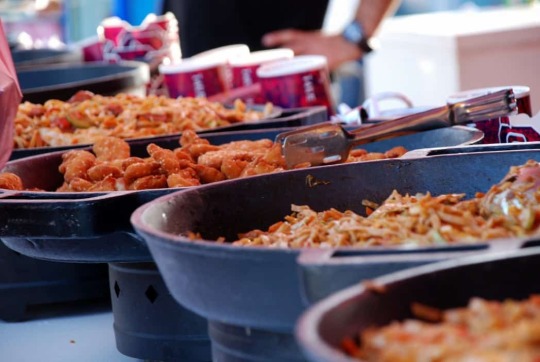
Thai foods have made a name for itself everywhere. Even if you have never been to Thailand, it’s likely you’ve sampled some version of Thai cuisine in a western restaurant. If you’re lucky enough to have the chance to visit Thailand and sample some authentic Thai foods, you will be very surprised at how different the real deal is!
The staple of Thai foods is rice; the different types, how to cook it, what to put on it, or what to combine it with. In fact, in Thailand when you want to ask someone if they want to eat something you don’t say “Do you want to eat?” You say, “Do you want to eat rice?” It is assumed that rice is a part of every meal, so this is how the question is posed. Every dish on this list is either made from rice or served with rice!
Food in Thailand is a huge part of the culture. There are dishes that are so unlike anywhere else in the world, you’ll wonder how they ever created such strange but delicious combinations.
There are four words that can be used to describe most of Thailand’s main dishes; salty, sweet, sour, and spicy. Whether it’s a salad, soup, curry, or stir fry, get ready to test the limits of your taste buds and indulge in some of the most delicious and flavorful food in the world!
Spicy Papaya Salad (Som Tam)
This dish is one of my absolute favorites of Thai foods. Originally coming from the Issan (northeast) region of the country, this salad is now consumed nationwide.
To start, an unripe papaya is peeled and grated. When papaya is not its usual ripe-and-ready-to-eat orange color, it’s a light green or off-white color with a sour taste. Some places will grate a little carrot into the mix too. Then diced tomatoes, a few pieces of garlic, fresh green beans, a few peanuts or cashews, a few hot chili peppers, lime juice, sugar, and fish sauce are crushed together with a mortar and pestle. The papaya is then added for a final toss.
The real art of Som Tam is knowing how much of each ingredient to use. Usually this salad is made very spicy, unless you otherwise specify. When I order it, I always say “pet nid noi” or “prik nueng, ka!”, which means “a little bit spicy” or “one chili, please!”
This salad is usually combined with other side dishes to compliment a main meal. It can, however, be quite filling if combined with shrimp or chicken and paired with sticky rice.
FYI: some places will make the same dish, but substitute an unripe mango for the papaya. Slightly different taste and just as good!
Spring Rolls (Bah Bpee-ya)
Deep fried Thai spring rolls are perfect if you’re craving something sweet and salty. They’re a quick, cheap, and crunchy snack that can be found at many street stalls. They’re also great to order as a shared appetizer if you’re eating out. You’ll find them on most restaurant menus.
Most spring rolls contain a minced pork filling if they’ve been pre-made at a street stall. However, it’s possible to order them vegetarian style in a restaurant. The typical ingredients include the minced meat, muang bean noodle (thin and clear), and bean sprouts. You may also find some grated carrot in there occasionally.
Served with a tangy sweet and sour dipping sauce, these are the perfect snack or warm up for your main meal!
Massaman Curry
One of Thailand most unique curries is actually not one of the traditional Thai foods. Massaman curry is thought to have been derived from Persian culture long, long ago. Its name, which stems from the word Muslim, could have been influenced by nearby Islamic countries like Malaysia or Indonesia.
In any case, Massaman is a rich and mild curry that is simply irresistible. It’s the Thai foods equivalent to hot bowl of chili or chowder son a cold day.
The magic of Massaman is in the curry sauce, made from coconut milk, cinnamon, cumin, and nutmeg. The other ingredients vary, but you’ll usually find either chicken or beef Massaman combined with potato, carrot, peanuts, and bay leaves.
Massaman, like all Thai curries, is served with a plate of plain steamed rice. It some traditional southern towns (like Surat Thani), you may find Massaman served with roti, which is like fried dough. This is a real treat.
Fried Noodles (Phad See-Euw)
Not to be confused with Phad Thai, which is one of the most cliché things you can order as a tourist in Thailand. Phad See-Euw is the more authentic version.
This is a savory dish of sticky, wide fried noodle dishes. The noodles start as white rice noodles (called “sen yai”) and are then combined with garlic, Chinese broccoli (dark-green veggie), soy sauce, sugar, and one egg. Usually combined with chicken (“gai”) or beef (‘nu-ah”), but it can also be made vegetarian (“mai sai nu-ah”) if you choose.
Fried together in a wok and you’ve got the tastiest noodle dish in Thai foods.
Noodle Soup (Goy-Tee-Ow Nam-Sai)
The Thai version of good, old fashioned, chicken noodle soup. However, nothing about it is comparable to a tin of Campbell’s.
When ordering this dish, it’s good to know a little Thai, because you can create your own. Thai soup varies depending on the broth, the noodles, and the additions. You can pick the type of noodles – wide (“sen yai”), thin (“sen lek”), yellow (“sen ba-mee”), glass noodles (“wun sen”), etc. You can also pick the type of broth – clear broth (“nam sai”), spicy broth (“tam yam”) are the most common.
With the broth and noodles chosen, the next is step is fillings. Chicken or beef can be added, different types of vegetables, dumplings, and what’s known as fish ball. These have a consistency that’s tougher than tofu with a medium fishy taste. They’re strange, but common in Thailand.
The soup is served with an array of flavorings like vinegar, dried chili flakes, sugar, and crushed peanuts for you to garnish your own soup. You are the master of your soup domain!
Tom Yam Zaab, an example of a spicy broth soup with beef and plenty of coriander!
Coconut Chicken Soup (Tom Kha Gai)
This is another type of soup, bordering on curry, and one of the most unique dishes in Thai foods. Tom Kha Gai’s base is a mild, slightly sweet, creamy coconut milk broth. Added to the base to get the unique Tom Kha taste is ginger, lemongrass, and lime leaves.
Mushrooms, tomatoes, and onion are usually mixed in as well. Chicken is added, and there you have it!
Served with rice (of course), this is a filling and satisfying meal.
Fried Rice Omlette (Khao Klook Kapi)
This is a different version of fried rice and good to order if you’re really hungry. Fried rice is standard all over Thailand, but an omlette stuffed with fried rice is something special. Yes, it sounds strange, but the salty, savory combo is great. Not to mention, ridiculously filling.
You start with the traditional Thai fried rice combination of rice, egg, fish sauce, soy sauce, sugar, and lime juice. The omlette is prepared separately, then the fried rice is wrapped up in the omlette. Picture a calzone – except the folded over crust is the omlette and the cheesy pizza filling is the fried rice!
Don’t forget about DESSERT! Thailand loves sweet treats and you’ll never find a shortage of delicious delectables. Some may not be what you’re used to, but there are two that cannot be missed!
Mango Sticky Rice (Khao Nee-ow Mamuang)
Unlike anything you’ve ever tried. Mango sticky rice is probably the best-known Thai dessert, and capable of satisfying even the strongest sweet tooth.
The dessert combines sweet mango and slow cooked sticky rice in coconut milk. The rich flavor of the rice mixed with the sweet tang of the mango is a brave combination only Thailand would have thought to try. I thank them for it!
Banana Pancakes (known simply as “pancake”)
This freshly made pancakes can be had at any time of day, but they’re a perfect dessert if you feel like sharing something sweet.
The best pancakes are made at the small street stalls, usually manned by one or two people and a large flat wrought iron hot-plate. Most places have a variety of filling to choose from, but the most popular is the banana pancake with Nutella and garnished with condensed milk.
The dough is put on the hot iron and fried. The banana is sliced and added inside and then the pancake is turned over on itself. The outcome is a square, crispy, fried piece of delicious dough. The larger square is then sliced into smaller, bite-sized pieces.
If you opted for Nutella, it’s spread on the surface of the pancake. It’s completed with a drizzle of condensed milk, which forms small pools in the fried dough. It’s packed with calories, but no one every complains!
Once you start, it’s difficult to get enough of Thai food. The flavors and combination of ingredients (fish sauce and lime juice – what?!) are drastically different from any western-style food. But somehow it works – really, really, well.
These are just a few of my favorite Thai foods, but there are countless others that deserved to make this list. It’s nearly impossible to choose! The best way to discover your favorites is to try them all yourself!
0 notes
Text
Asian Food Tour 2016 (Osaka, Japan)
Nearing the end of our honeymoon or really a glorified food tour, we saved the best for last. Since birth, my fascination with everything Japanese has been quite intense. Throughout the years, I’ve collected Japanese toys, memorabilia, and seen a wide variety of Japanese movies and animation. There was also a time while I was in college that I ate nothing but Japanese food like sushi, sashimi, and a variety of ramen. As you can see, I love the Japanese culture. I was fascinated by the concept that beauty lies not in perfect symmetry, but in the handmade, asymmetrical ways of nature. From Japanese architecture to how food is plated, there’s an appreciation for imperfection. The standard of beauty in visual art is rarely associated with polished images and balanced shapes, but in an honest and simple reflection of reality.

When it comes to food, the Japanese are among the most enthusiastic and passionate of any race. Ask any Japanese person about a recent trip within Japan and the conversation almost always includes talk of the local food. In fact, for many Japanese travelling outside of their hometowns, food is often one of the primary motivators for travelling.
For this reason many towns and cities in Japan are known first and foremost for their local speciality, whether it be a type of sweet, fish, noodle, seaweed or tofu etc. Such is the Japanese passion for food that you can turn on your TV at almost any time of the day or night and almost undoubtedly catch a show about food.
Careful preparation and meticulous presentation are crucial elements of Japanese cuisine. Food is an art form and even the simplest dishes are often prepared by chefs who have trained for many years.
1. Dotonburi, Osaka
One of my favorite things we did in Japan involved just one street. Yes, I realize there are millions of people living in Japan, hundreds of temples and shrines, parks and gardens, sky towers with incredible views, centuries old fish markets, Michelin-star restaurants, tons of izakayas. You name it. Japan has it. But for me, the star of the show was one single street in Osaka: Dotonbori.

Osaka is called the "Kitchen of Japan" for obvious reasons. Osaka pretty much holds the trophy for the origin of most foods in Japan. Food items like, Takoyaki (balls of batter filled with octopus pieces), Okonomiyaki (Japanese savoury pancake containing a variety of ingredients), Yakiniku (Japanese BBQ), and many more. The best place in Osaka to find all those items readily available and sold on the street is Dotonburi. Dotonburi is the busiest spot in Osaka. Dotonburi is so crowded it seems like 70% of the population of Osaka are usually hanging around the area at one time.

If no one has told you, Dotonbori is a foodie’s dream. With food prices cheaper than Tokyo and a selection that is second to none, Dotonbori is full of eclectic choices that range from seafood side vendors, to traditional sushi, thousands of ramen joints and teppanyaki on each corner street.
The Iconic Glico Man of Dotonburi

The busiest Dotonburi River

Takoyaki is its giant piece of octopus inside a delicately cooked batter ball dumplings covered with an array of toppings like shaved bonito flakes, scallions, Japanese mayo, and more. It may be just a little bit difficult to eat in one single shot as the octopus is super hot but we all know that it is part of fun.

One of the coolest and exciting aspects of this snack is watching it being created from scratch. The chef creates this magical concoction pours it into the pan, place octopus in the small round holes and lets them fry away. This snack takes considerable skill to made efficiently and effectively. If the chef does not let the bottom half of the batter fry properly before stirring it will become a mash of half-cooked dough. Moreover, if the chef lets the batter fry too long it will stick to the pan and, again, will become a mash of half-cooked dough.
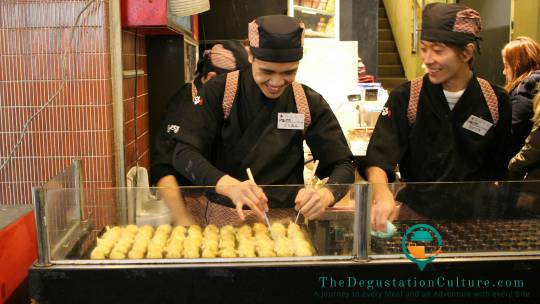
There is nothing like molten hot half-cooked batter scolding your tongue and roof of your mouth to get your food jollies going! Before you rip into this snack be sure to remember that this ball of joy is not fully cooked on the inside and will burn the hell out of you.

Our Takoyaki was topped with shaved bonito flakes, Japanese mayo, wasabi flakes, and takoyaki sweet sauce. Part of the reason it was so good was that it was completely fresh, taken right off the griddle, seasoned, and served.

Charcoal Grilled King Crab
Konidoraku honten Osaka is one of the symbol of Osaka. The giant mechanical crab outside the restaurant will welcome you. When we think about crab restaurant, just come up with Kanidoraku.It is most popular crab restaurant in Osaka.
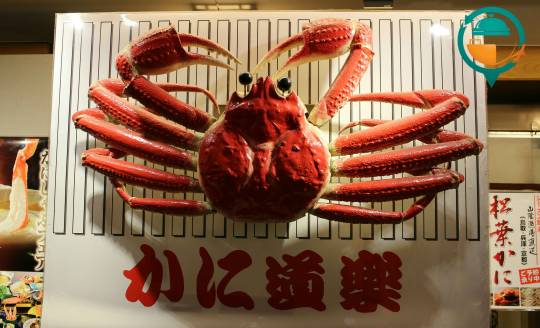
Due to the overwhelming line outside of the restaurant, we decided to just have a sample from the outside grill. The crab legs were split in half and grilled on an open flame. The chef carefully turns the crabs over to prevent it from burning but keeping it longer to start caramelizing to provide that seafood sweetness.


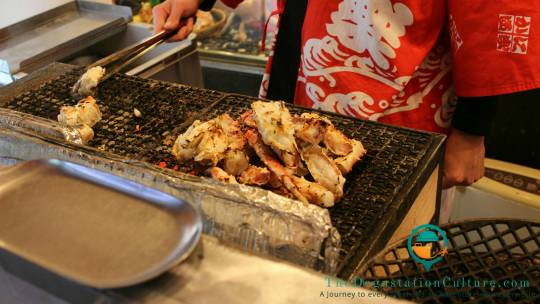

Gyoza are dumplings filled with ground meat and vegetables and wrapped in a thin dough. Also known as pot stickers, gyoza originated in China (where they are called jiaozi), but have become a very popular dish in Japan. The typical gyoza filling consists of ground pork, nira chives, green onion, cabbage, ginger, garlic, soy sauce and sesame oil, but some creative gyoza shops have also come up with a range of other fillings.
Aki gyoza are by far the most common type of gyoza. They are pan fried in a hot skillet before a mixture of water and cornstarch is poured in and everything is covered for a few minutes. The water and cornstarch mixture helps to steam the gyoza, making them soft and juicy while creating a thin crispy bottom on the individual gyoza. Yaki gyoza are typically served with the crispy bottom side up. Hanetsuki gyoza ("gyoza with wings") is the term used when the individual gyoza pieces are all connected by the thin crispy bottom.
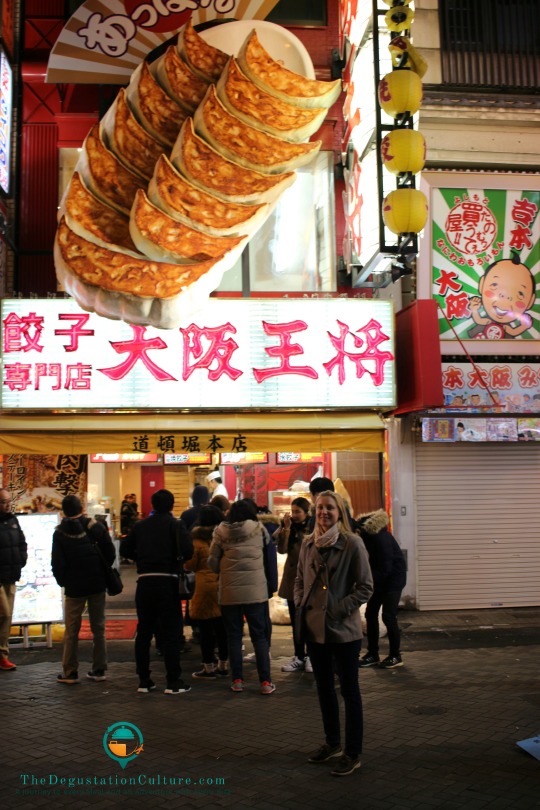
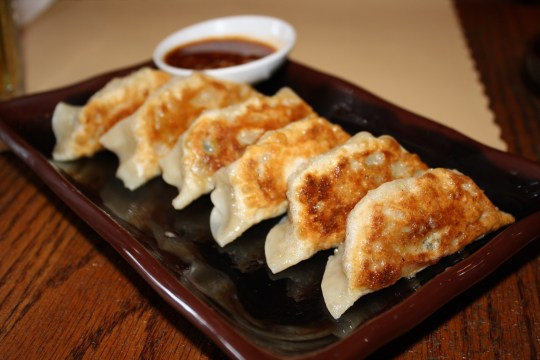
Grilled Buttered Japanese Scallops
By far one of my favorite dishes all over Japan. I have a lot of favorite foods, but when it comes to seafood, one of my absolute favorite things from the ocean are scallops. These gigantic mollusks are cooked in there shell with all the innards totally intact.

The scallop was first popped open, cleaned, then put back into half of its shell, and then set on the grill. It was seasoned with a dab of butter, and a spray of some soy sauce (I think, or something in a spray bottle), and it sizzled in its own scallop juices and butter for just a minute until cooked.

The scallop was unbelievably delicious.The meat was firm yet soft and silky, and it had a natural sweetness to it, with a faint soy sauce and roasted butter aroma and flavor.
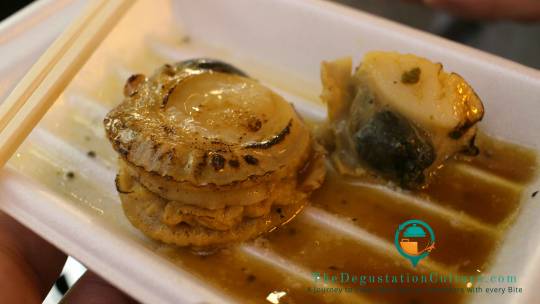

World's Second Best Freshly Baked Melon-Pan Ice Cream
This amazing creation of melonpan ice cream has taken Osaka (and in fact the whole Japan) by storm. Tracie was so excited to try this out because she has an ultimate weakness for freshly baked sweet breads and ice cream.


Basically what they do is serve up a crispy, hot melonpan, which is a popular sweet bun in Japan with a crispy layer on top that resembles a melon (also known in some places as 'pineapple bun'). Do not be misled by the name, as it is not melon-flavored. They cut it open, and add a slice of vanilla ice cream and a dab of chocolate syrup inside as a 'stuffing' almost and serve it with a small pastry that looks like a mini piece of toast. The combination is so so delicious! Contrast of the hot melonpan's crispiness with the cold, soft ice cream. Gets even better when the bread soaks up the melting ice cream, even though it gets a bit messy!


Tracie came back on our last night in Osaka just to be disappointed at the sight of an empty line and a closed up van. I will use this picture to convince her to come back to Osaka and complete her unfinished business.

Kobe Beef
Since Kobe Prefecture is only 21 miles away from Osaka, Kobe beef is sold all over Dotonburi. There are numerous restaurants and vendors that carry the one of the most prized cattle in Japan. On our first night in Japan, we sure didn’t wait too long to taste this famous meat.

The chefs showcased their cooking and knife skills by preparing and cooking the beef right in front of their customers. Both of us were watching quietly while my tummy was waiting impatiently to taste the wonderful meat. They cooked it perfectly and also made the extra effort to cut them into even bite-sized pieces and seared the meat carefully on all sides. The meat was then served on top of grilled onions.
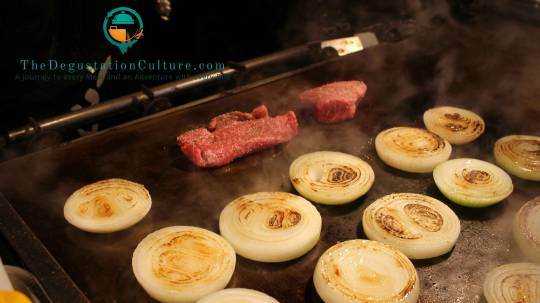
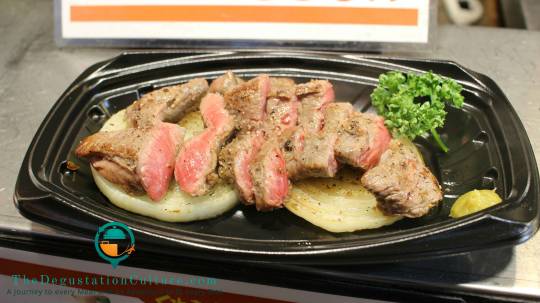
Below is a copy of the information about the cattle that our delicious Kobe beef came from. In order to be classified as Kobe Beef, the cattle has to be graded and approved by the Japanese government.
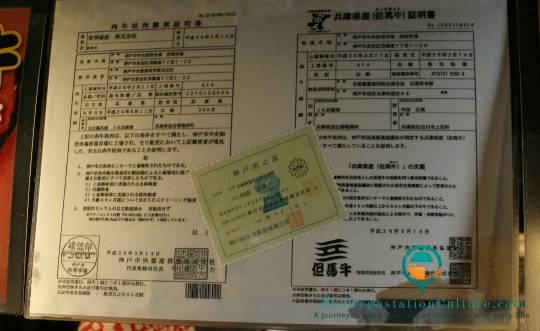

Yakitori are grilled chicken skewers made from bite sized pieces of meat from all different parts of the chicken, such as the breasts, thighs, skin, liver and other innards. Usually made to order and cooked over charcoal, yakitori is a popular, inexpensive dish commonly enjoyed together with a glass of beer. The best yakitori is served at specialty restaurants, known as yakitori-ya, but it can also be found at many other types of restaurants across Japan, such as izakaya, and in this case, street food stands.

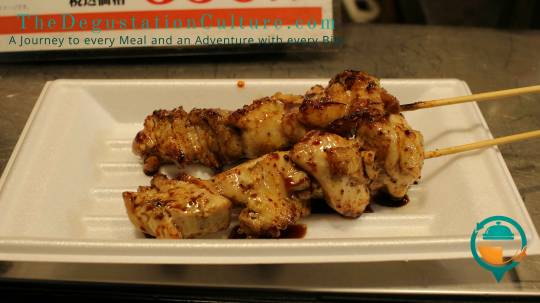
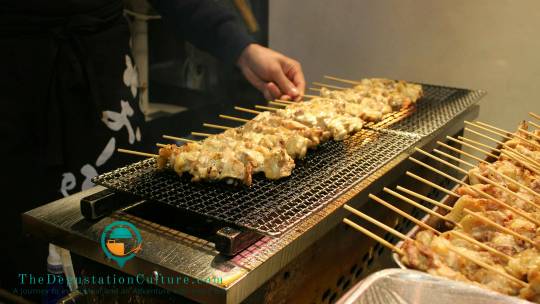
Kushikatsu Daruma
Gourmet and chicken nuggets don’t really go together, right? But leave it up to Japan to make everything better quality, including chicken nuggets, or rather gourmet deep fried skewers of ingredients better known as kushikatsu.


Kushikatsu, deep fried things on skewers, wasn’t something I was all that excited about trying in Osaka, but I should have known it would be some of the best deep fried things on skewers I’ve had in a while.

Tempura is another famous deep fried Japanese food. But unlike tempura, kushikatsu is more of a snacking street food style of food, much less delicate and not as refined in quality as tempura. Kushikatsu is the type of Osaka snack food that you go to eat and socialize, drink beer, and enjoy some tasty junk food style deep fried skewers.


0 notes
Link
Mapo tofu. This mapo tofu recipe is the true blue, authentic real deal—the spicy, tongue-numbing, rice-is-absolutely-not-optional mapo tofu that you get in the restaurants! Mapo Tofu 麻婆豆腐. Китайская кухня! Готовим по-китайски дома! The Japanese-style Mapo Tofu (Mabo Dofu) is incredibly flavorful but less spicy than the Sichuan-style.

She is a totally reliable lady. Mapo Tofu is a traditional Sichuan dish which features peppercorns and hot peppers to give it that. Mapo tofu is one of the top ten famous Chinese dishes and enjoys a high popularity among not only At the very beginning, Mapo tofu is named after its creator.
Hey everyone, I hope you are having an amazing day today. Today, I'm gonna show you how to make a special dish, mapo tofu. It is one of my favorites food recipes. This time, I am going to make it a bit unique. This is gonna smell and look delicious.
This mapo tofu recipe is the true blue, authentic real deal—the spicy, tongue-numbing, rice-is-absolutely-not-optional mapo tofu that you get in the restaurants! Mapo Tofu 麻婆豆腐. Китайская кухня! Готовим по-китайски дома! The Japanese-style Mapo Tofu (Mabo Dofu) is incredibly flavorful but less spicy than the Sichuan-style.
Mapo tofu is one of the most well liked of recent trending meals in the world. It is simple, it's quick, it tastes yummy. It is appreciated by millions every day. They are fine and they look fantastic. Mapo tofu is something that I've loved my entire life.
To get started with this recipe, we must prepare a few ingredients. You can cook mapo tofu using 25 ingredients and 8 steps. Here is how you cook it.
The ingredients needed to make Mapo tofu:
{Make ready of For the mince meat seasoning:.
{Make ready 1/2 teaspoon of white pepper.
{Make ready 1/2 teaspoon of fine salt.
{Make ready 1 of cap of Shaoshing Rice Wine.
{Get of Thickening mapo tofu sauce:.
{Take 1 teaspoon of corn starch.
{Take 1-2 tablespoon of water (to create a liquid paste).
{Make ready of Making the mapo tofu:.
{Prepare 1 tablespoon of cooking oil (or any cooking oil of preference).
{Get 1-2 teaspoons of Sichuan peppercorns (add more or less depending on spice level preference).
{Take 2 teaspoons of ginger, finely minced or grated.
{Take 2 of spring onions, finely sliced (stalk part for cooking, green part for garnish).
{Prepare 500 g of mince pork (or any other mince meat depending on preference).
{Get 2 of medium garlic cloves, finely minced or grated.
{Make ready 500-600 g of medium firm tofu or silken tofu, drained and cut into 3/4 inch cubes (add more or less depending on preference).
{Make ready 1/3 cup of frozen peas (add more or less depending on preference), soaked in warm water.
{Prepare of For the mapo tofu sauce:.
{Make ready 2 tablespoons of La/spicy Doubanjiang (chilli broad bean paste).
{Make ready 1 tablespoons of Non-spicy Doubanjiang (broad bean paste).
{Make ready 1-2 tablespoon of crushed Yellow bean sauce (add more or less depending on preference).
{Make ready 1-2 tablespoons of spicy chilli sauce (or spicy crushed garlic sauce if not using fresh garlic).
{Take 1-2 teaspoons of white pepper.
{Get 1-2 cups of hot water (from kettle).
{Get of Garnish:.
{Prepare of Spring onions, finely sliced.
It is recorded that there is a couple who. What does mapo tofu taste like? Mapo tofu tastes spicy: both conventionally spicy with heat on your tongue, and málà, a numbing kind of spicy that is characteristic of Sichuan food. This easy Mapo Tofu recipe 麻婆豆腐 has the bursting and mouth-numbing flavor that you must try.
Instructions to make Mapo tofu:
In a bowl transfer the mince meat and season with white pepper, salt and Shaoshing rice wine. Set aside..
Finely chop the garlic, ginger and spring onions and set aside. In a wok on medium heat, heat up the oil, add the Sichuan peppercorns and cook until fragment. Then add the ginger and the chopped stalks of the spring onions and stir occasionally to prevent burning. Cook for 1-2 minutes..
Add the mince meat and break it into small grains (to avoid getting clumps) using a wooden spatula. When the meat is almost cooked add the garlic and stir occasionally to avoid the garlic getting burnt..
When the meat is cooked add both types of doubanjiang stirring to distribute the paste evenly, then add the rest of the sauces. Let it cook for a few minutes so the meat can soak in the flavours of the sauces. Then add the hot water (pre boiled kettle water) and let it simmer. Reduce heat to low for 5 - 7 minutes and cover with lid. Taste the sauce and amend if needed (add more spicy chilli sauce for hotter, white pepper or non spicy doubangjiang etc)..
Gently place the cubed tofu into the mixture. Tip: gently stir and mix the tofu in to avoid it loosing its shape and breaking apart. Let it cook for 1 minute. Lastly, add the peas and gently stir and incorporate into the mixture..
In a small bowl add the cornstarch and water. Stir well until the mixture has dissolved into a liquid paste..
Now add cornstarch mixture to wok. Stir everything gently, place a lid on the wok. Leave to simmer and turn the heat to very low heat for 5 - 10 minutes until the sauce thickens. Tip: if the mixture is still thin add a little more cornstarch liquid to make the sauce thicker..
Once the sauce is to desired thickness, to finish off garnish the mapo tofu with the finely sliced green part of the spring onions. Then transfer into a large serving bowl. Eat and and serve immediately while hot. Eat it with a bowl of rice and some side dishes like steamed or panfried vegetables..
Mapo Tofu (麻婆豆腐) is a fiery Sichuan pork and tofu stir-fry with the hallmark málà(麻辣) balance of tongue tingling and spicy. Mapo Tofu - Learn how to make flavorful, and delicious Chinese mapo tofu with this easy recipe that you can make at home and better than restaurants. EDIT: Try our new-and-improved Mapo Tofu recipe here. Hey, so /u/soupaboy and Despite how beloved this dish is, there's a lot of really marginal recipes for Mapo Tofu floating around the internet. An easy mapo tofu recipe that creates the authentic taste of China.
So that is going to wrap this up with this special food mapo tofu recipe. Thank you very much for reading. I am confident you will make this at home. There is gonna be interesting food in home recipes coming up. Don't forget to bookmark this page on your browser, and share it to your loved ones, colleague and friends. Thanks again for reading. Go on get cooking!
0 notes